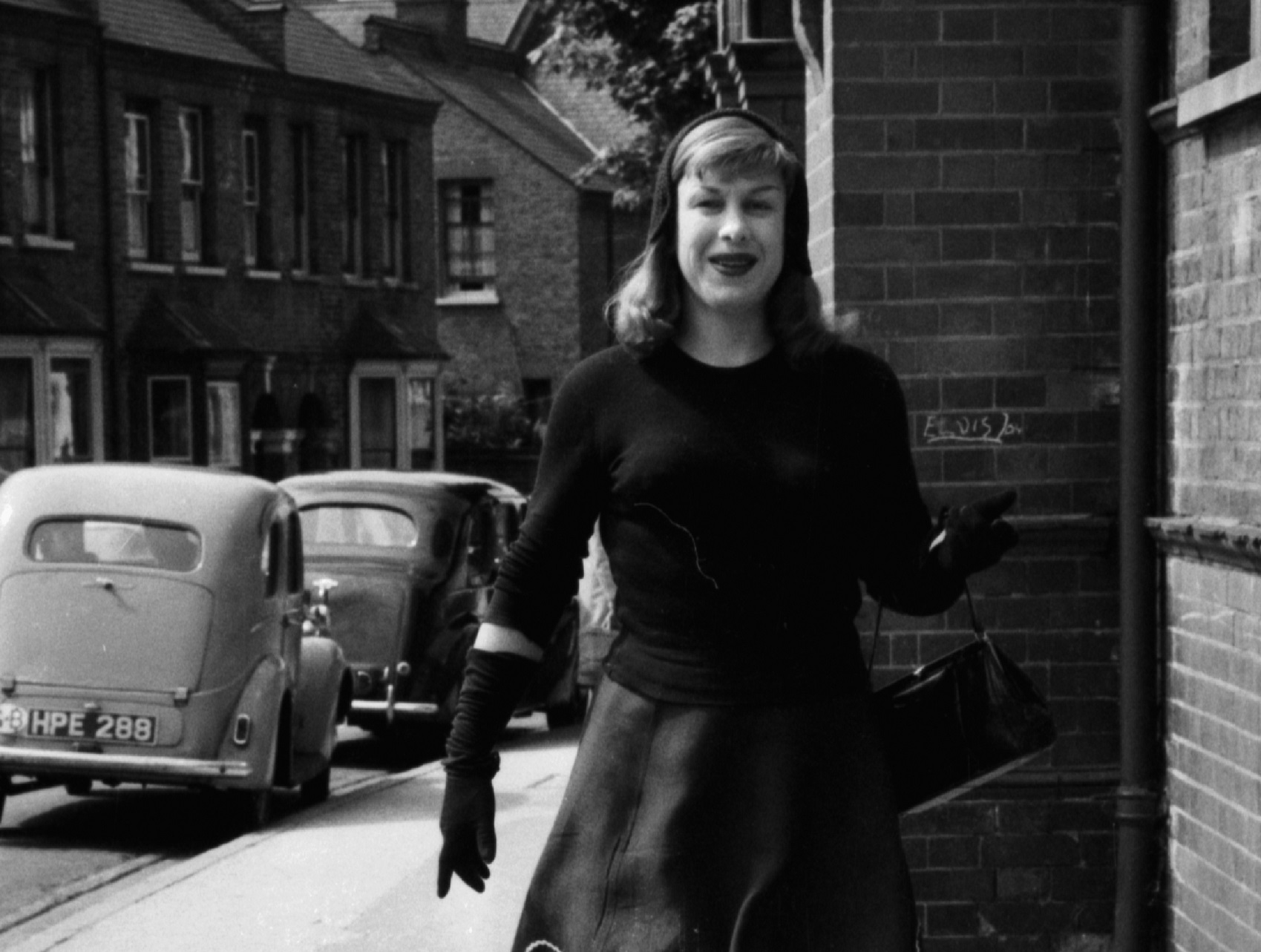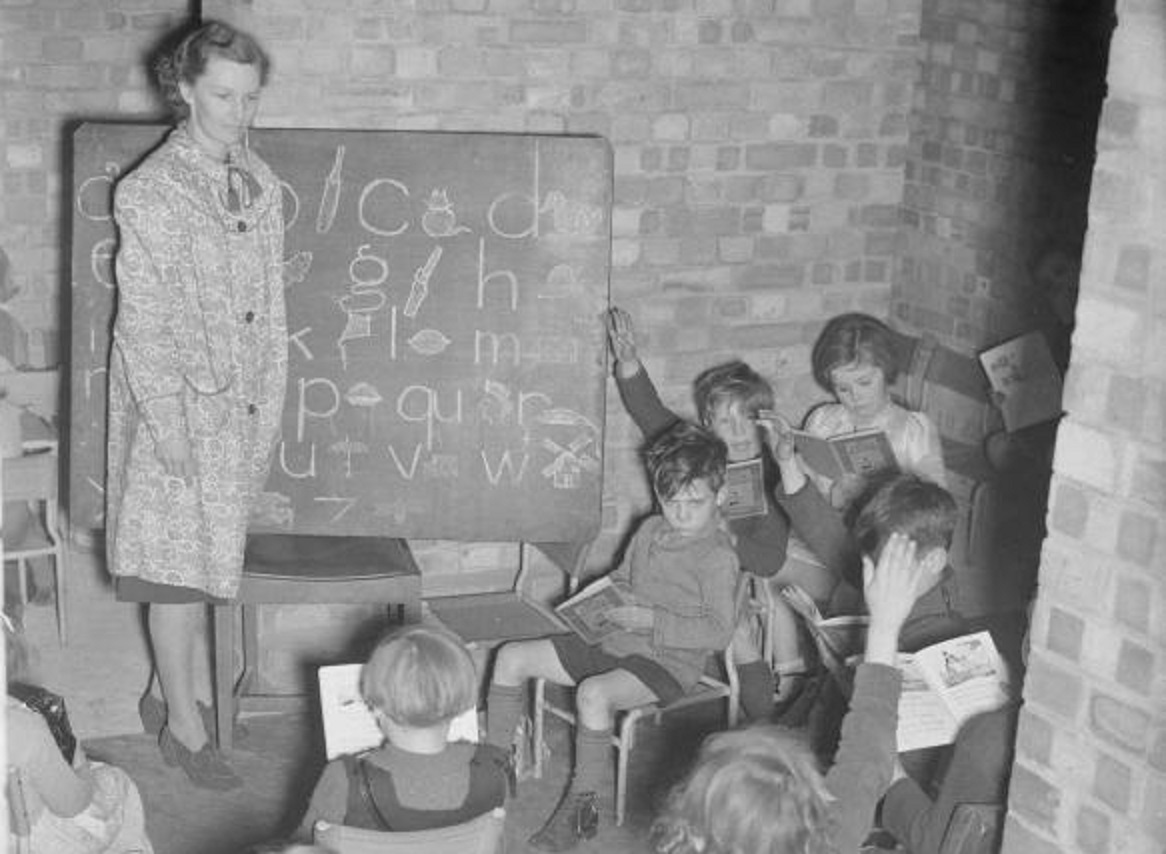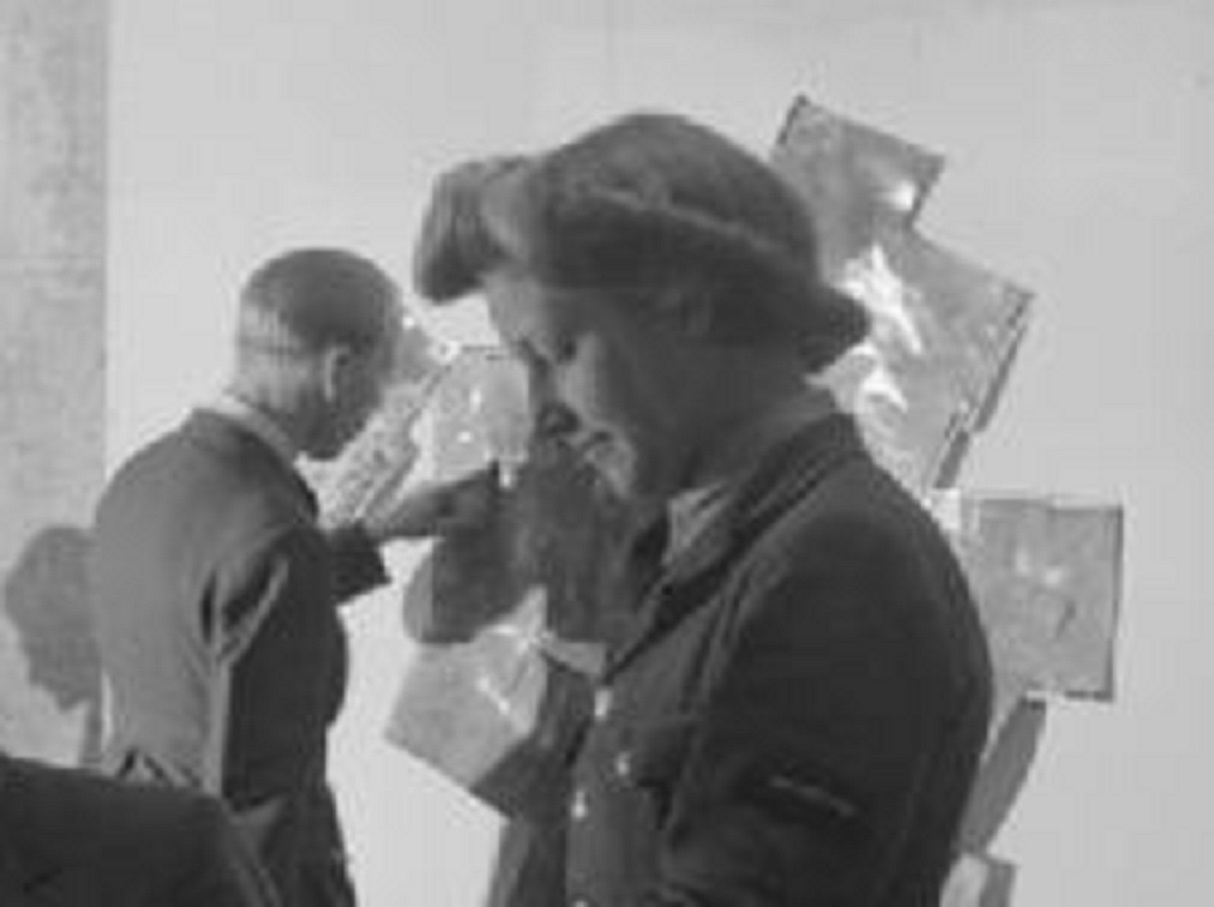Tough-as-nails Roberta Cowell seemed invincible as a pro race car driver and fighter pilot—but nothing lasts forever, and Cowell learned that the hard way.
1. She Had A Few Too Many Close Calls
Roberta Cowell was a successful motorcar racer and member of the Royal Air Force, who survived—with many close calls—WWII as a fighter pilot. But while her scars from her time behind enemy lines were still healing, she became famous for something else entirely: being the first openly transgender woman in the UK. She was only 33 when she transitioned. But by that time, life in the fast lane was catching up with her.

2. She Grew Up As A Boy
Although she eventually lived publicly as a woman, Roberta Cowell spent the first 33 years of her life as a man. In fact, she described her younger self as “an aggressive male”. And it’s true. She liked to go fast and take risks—especially when her parents weren’t around. One day, this risk-taking got her into trouble.
 Channel Four Television, Secret History - The Spitfire Ace (2015)
Channel Four Television, Secret History - The Spitfire Ace (2015)
3. She Always Went Fast
Cowell was a daredevil kid with a need for speed. Even when all she had to drive was a scooter. One day as a little kid, she found herself on her scooter at the top of a huge hill. No parents in sight—only her nanny. So, she put on her imaginary helmet, revved the imaginary engine, and proceeded to launch herself down the giant hill. Of course, her scooter had no brakes.
 Channel Four Television,Secret History - The Spitfire Ace (2015)
Channel Four Television,Secret History - The Spitfire Ace (2015)
4. She Had A Scary Accident As A Kid
The next thing little Cowell knew, she was in her stroller, being pushed home by a very angry (and not nearly concerned enough) nanny. She remembered only that there had been a curve in the road. After that she remembered nothing at all: she had been knocked unconscious by the fall.
Fortunately she recovered, but she would soon face an even more distressing event: going to an all-boys school.
5. She Dreamt Of Fame
Cowell had big dreams for her future as a motorcar racer. She dreamt of becoming an idol for young boys everywhere, “heroically doing fantastically courageous things and then nonchalantly signing autographs,” as she put it. There was just one problem. She was still a kid and she and her classmates were way too young to get their drivers’ licenses.
6. She Was In Her School’s Motor Club
Even though Cowell and her classmates had no drivers’ licenses, they did have cars. Because this school had a Motor Club. Cowell, of course, was an enthusiastic member of the club. She and the other boys drove old, decrepit cars and motorcycles around school grounds.
I mean, I guess this school had teachers. Who knows where they were. Because they definitely weren’t there when Cowell started getting called horrible names.
7. She Got Made Fun Of In School
Cowell’s success in Motor Club couldn’t protect her from her classmates’ vitriol. I’m not sure where you went to school, but where I went, middle schoolers were mean. It doesn’t matter if you are the most beautiful person on earth; middle schoolers will find something to make fun of. So with Cowell, who had a fairly large middle section, the kids had a field day.  Getty Images
Getty Images
8. She Had A Cruel Nickname In School
Teens can be unusually horrible to each other, and a bunch of British boys in the 1930s were no exception. Cowell was “rather fat,” as she put it in her autobiography. Her classmates came up with two nicknames. The first one was “Circumference”. At least it’s creative. The second one, which the boys borrowed from A Midsummer Night’s Dream, was the less creative “Bottom”.
Amazingly, Cowell was unbothered—even when others found even darker ways to try and torment her.
9. She Rejected Religion
Nothing is scarier than a religion obsessed with eternal suffering. Cowell was raised strictly Christian and went to church every Sunday. But from a young age, she thought pretty much everything she heard was (a) bogus and (b) supremely boring—including the bit about burning in the underworld forever.
But her family and fellow-church goers were worried about her.
10. Her Family Was Worried She’d Rot In Hades
The people in Cowell’s life were certain that she was doomed to “everlasting torment”. Some of her family held out hope that she’d eventually come around. One person assured her that she’d change her mind just before she, uh, entered eternity. Comforting, thanks.
Little did they know, Cowell would indeed have the opportunity to experience this prediction—because she would find herself in numerous close calls.
11. Her Filmmaking Hobby Was Also Dangerous
Cowell found a way to turn even seemingly safe hobbies into a dangerous game. After racing, her major hobby was photography and film. One day, she and her schoolmates were filming a movie about bandits. But they didn’t have a props department. They were kids. So a couple kids borrowed real revolvers from family members. What could go wrong?
12. One Of Her Films Almost Ended In Tragedy
While most of the revolvers Cowell and her friends used for their homemade film contained only blank cartridges, one of them did not. It was actually fully loaded—unbeknownst to the kid who decided to pull the trigger while aiming at his friend. And his aim was pretty good. He came this close to hitting him in the head.
13. She Would Do Anything For The Right Shot
Cowell’s classmate who fired right at his classmate’s head actually did make contact—with the boys’ hat, mere inches from his head. Luckily, only the hat was hurt. Cowell’s biggest concern in all this? That no one had been filming. So when she had the chance to get a shot of a lifetime, she took it—even though it put her in serious hot water.
14. She Was Put Behind Bars As A Teen
Cowell’s filmmaking hobby traveled with her. One summer holiday, she and a friend were traveling around Germany. In Frankfurt, she happened to stumble upon a bunch of Waffen-SS doing their routine drills. She filmed the whole thing—even though this was definitely not allowed. Unfortunately, someone saw. And that someone may have been an officer of the law.
15. She Lied To The German Authorities
The 16-year-old Cowell was detained for filming the Waffen-SS. She spent a few hours in detention, but then she proposed a bargain. She agreed to destroy the film she had taken if they would let her go. The officers agreed; she did; and she was set free.
But the officers didn’t know one thing: She was a liar. She had shown them a blank roll of film and had kept the original footage intact. This wasn’t the only time she’d lie to get what she wanted.
16. She Lied Her Way Into Learning About Race Cars
Cowell’s lying her way from out behind bars was not the only bit of deception she practiced. Back home, she learned how to do actual motor-racing, a lifelong dream of hers, by sneaking into the mechanic’s area at the Brooklands racing circuit, dressed as a mechanic. Which she was definitely not.
But she got the experience she needed and would soon be tearing up the racetrack.
17. She Won A Race In Her First Year Of College
While studying engineering at University College London, Cowell spent a lot of her time racing. She owned three of her own race cars and in her first year at college, she won the Land’s End Speed Trial. But it wasn’t just the racing itself she loved. She had a very strange racing-related quirk.
 Ministry of Information Photo Division Photographer, Wikimedia Commons
Ministry of Information Photo Division Photographer, Wikimedia Commons
18. She Kept A Bottle Of Unusual Liquid On Her
Cowell loved racing and she wanted to be reminded of it even when she was off the track. So she carried around a little bottle with a tincture of perfume. Only it wasn’t perfume. It was a mixture of fuel and oil. She would often sniff whenever she needed comfort. But this obsession with the smell of gas would cause problems in her romantic life.
19. She Took Girls On Dates To The Race Car Track
Cowell never had much luck with women when she was living as a man. One breakup in particular, though, happened for an absurd reason. While out on a date with her girlfriend at the Brooklands racing circuit, they walked by a car that was warming its engine. What the girl said next caused Cowell to end the date immediately.
20. She Broke Up With Someone For A Crazy Reason
When her girlfriend called the smell of gas “horrible,” Cowell was revolted. “Had she suddenly grown another head I could not have regarded her with more horror and dislike,” she later wrote. Cowell didn’t even accompany her home—she just left her at the racetrack and never saw her again.
Which was maybe just as well. Because Cowell was about to go off to fight in the biggest conflict the world has ever known.
21. She Wanted To Be A Fighter Pilot
With the start of WWII, Cowell wanted more than anything to enlist as a fighter pilot. She had already completed some training with the Royal Air Force years earlier. So she “bombarded the Air Ministry with applications, requests for interviews, and telephone calls” for three months. But in the end, she failed—because she had a fatal flaw that made flying a questionable career choice.
22. She Had A Bad Reaction To Flying
The Royal Air Force rejected every single one of her applications. But they had very good reason to. You see, there was one glaring problem with Cowell becoming a fighter pilot. Flying made her feel extremely sick. Cowell took the hint and took a break from trying to join the RAF for a few years. But she would soon try again. And this time she was prepared.
23. Her Fighter Pilot Test Was Extreme
Cowell was not one to give up easily. For her final application to the RAF, she was prepared. Or so she thought. Unfortunately, so were they. Knowing about her extreme airsickness, the instructor did so many sharp turns and barrel rolls that even a stone would have thrown up.
If she didn’t make it through this test, she might never become the fighter pilot she had dreamed of being since she was little.
 Imperial Museums, 1942-1945, Picryl
Imperial Museums, 1942-1945, Picryl
24. Nevertheless, She Persisted
Through sheer force of will (and by closing her eyes for the entire flight), Cowell kept her lunch down through all the loop-de-loops in the sky. But when she opened her eyes, she saw that the instructor had made himself sick with his crazy flying. Needless to say, she passed. She never fully got over her airsickness.
But that didn’t stop her from carrying out important missions for the Allies, including one that almost ended in disaster.
25. She Did Dangerous Reconnaissance Missions
In 1944, Cowell was assigned to a reconnaissance mission. All was well until she got to France. Because France is where the oxygen system of the Spitfire PR.XI she was flying completely failed. While she was 31,000 feet up. Pilots today are supposed to start using supplemental oxygen at 10,000 feet. She barely escaped alive.
 Royal Air Force, Wikimedia Commons
Royal Air Force, Wikimedia Commons
26. She Was Shot At While Unconscious
After the oxygen stopped working, Cowell completely lost consciousness. Fortunately, her plane did not. It continued to fly itself, carrying a fully unconscious Cowell along for the ride. It flew right over the part of France occupied by enemy Germans. And these Germans had anti-aircraft machines that were powerful enough to take down a plane.
 Royal collection of the United Kingdom, Picryl
Royal collection of the United Kingdom, Picryl
27. She Was Extremely Lucky
Fortunately, the Germans’ aim was off. They didn’t hit Cowell’s plane and she continued on blissfully unaware. Until she woke up…only 100 feet off the ground, with no idea where she was. The last thing she had remembered seeing was the Isle of Wight. But she was nowhere near England now.
 Royal Air Force, Wikimedia Commons
Royal Air Force, Wikimedia Commons
28. She Woke Up Completely Lost
With no idea where she was, in an airplane that had no functioning oxygen, ill with altitude sickness, Cowell regained consciousness—sort of. She later wrote, “It was exactly like a dream, I had no sensation of danger or even of reality”. Soon she realized someone was calling her on the plane’s radio, trying to help her fly home.
But her problems were only beginning: All of a sudden, she couldn’t read any of the plane’s navigation tools.
29. She Flew While Only Semi-Conscious
By this time, Cowell was flying semi-conscious. She couldn’t read her compass or any other tools that would have helped her fly home, so the air traffic controller told her to keep the sun on her left and just fly straight. And that’s what she did.
It was a miracle she survived. But the fight wasn’t over yet—and she soon returned to the battlefield.
30. She Was Fired At Again
After the near-fatal reconnaissance mission, Cowell went back to being a fighter pilot, making actual attacks on targets on the ground in Germany. During one of these attacks, on November 18, 1944, her airplane was hit. German anti-aircraft fire punctured a hole in the wing and knocked out the plane’s engine. She had to act fast if she was going to survive.
31. She Thought Her Life Was Finished
You know that classic image of a pilot escaping a doomed airplane by parachuting out? Cowell couldn’t do that. She was too low to the ground. She thought she was facing the end. The plane was out of control and making a steep dive straight for the ground. She knew she was about to face either capture by Germans or perpetual oblivion.
32. She Made A Miraculous Crash Landing
The plane was in a free fall over enemy territory, but all was not completely lost. Cowell managed to regain control of the plane at the last minute. Just before she hit the ground, she pulled the plane out of a dive and maneuvered a deadstick landing.
By the time the dust settled, she miraculously had only minor injuries. But her nightmare was just beginning: The Germans were waiting to greet her at the crash site.
33. She Was A POW
There were no captivity sites near the frontlines where Cowell was stationed. So for the first while, the Germans kept her in a farmhouse with “some very affectionate lice”. You’d think after almost meeting her maker, she’d need to decompress a bit. But there was no time.
She knew they’d move her further into Germany soon. She wanted to escape—and she needed to do it now.
 Unknown Author ,Wikimedia Commons
Unknown Author ,Wikimedia Commons
34. She Tried To Escape
The last night in the farmhouse, Cowell was roused at dawn and marched up the road. She knew her chance to escape was now or never. When she thought no one was looking, she jumped over a wall, dove into a tunnel, and started crawling. Unfortunately, it was a one-way tunnel. There was no way out the other side.
She was swiftly captured and loaded into a car for the next part of the trip—where she was bound to encounter another situation that could jeopardize her life.
35. She Was Almost Fired On By Her Own Side
The car ride after her escape attempt was not smooth. One person continuously scanned the skies for Allied aircraft. Suddenly, a line of Allied planes flew overhead. All the Germans immediately abandoned ship. They jumped out of the car and hid in the ditch.
Cowell was left in the car. She looked up, and her stomach dropped: There was one of her fellow pilots, directly overhead. She was sure they’d fire.
36. She Tried To Escape Again
Fortunately, the target of the Ally planes was not the car she was in, though they had no way of knowing she was in there. Cowell’s life was again spared. Her string of good luck continued when another opportunity for escape presented itself: a transfer from car to train.
After putting her in the train, she was, foolishly on the part of the Germans (hadn’t they learned by now?), left completely alone. She immediately jumped out.
37. She Was Captured Again
But she didn’t get far. The Germans saw her and recaptured her right away. By the time they got her back they had learned their lesson. They handcuffed her and took away her boots. She made the rest of the journey in her stocking feet.
She had failed in all of her escape attempts—now, the next five months would be some of the hardest of her life.
 Joost J. Bakker IJmuiden, Flickr
Joost J. Bakker IJmuiden, Flickr
38. She Was Very Hungry
Eventually, Cowell was transferred to a proper POW camp, called Stalag Luft I. The main theme of this time of her life was food—a lack of it. She and her fellow POWs were so poorly fed that she lost 50 pounds. Her and her fellow POWs dreamed of food, talked of food, and argued about food. So it was more than concerning when one day someone discovered that their daily bread ration had come to them full of tiny bits of sharp glass.
39. A German Baker Had A Vendetta Against Her
After the first person found the broken glass in their bread, everyone checked their own bread. It wasn’t a one-off. All the bread had glass in it. The German baker had put it there. He had recently lost his family in an attack in Hamburg and, as an act of revenge, had been baking broken bits of glass into the bread for Cowell and the other Allies.
Nobody seemed to have any problems from it—but they were still hungry. And they soon turned to extreme means of finding food
40. She Ate Anything That Moved
From time to time, the Red Cross delivered parcels of food to the prisoners in the camps. But there was a time when the parcels stopped coming. And Cowell had to eat something. As she put it, “there is very little that you cannot eat if you are hungry enough”.
Luckily for her, there were a bunch of cats running around the camp.
 Unknown Author, CC BY-SA 4.0 , Wikimedia Commons
Unknown Author, CC BY-SA 4.0 , Wikimedia Commons
41. She Ate Unspeakable Things To Keep From Starving
There was no question that the cats would be eaten. Cowell and the other detainees were starving. The only problem? They had nothing to build a fire with. But they didn’t let that stop them. They still ate the cats—raw. They ate every single one they could find. And things might have gotten even worse, but help was almost on the way.
42. She Refused To Leave
In April 1954, the Red Army approached the camp. The Germans wanted to evacuate, but the people in the camp refused. They knew this was their chance. They stood their ground and convinced the Germans to save themselves and leave their captives behind, unguarded.
Two weeks later Cowell was flown back to the UK—finally free—and, soon, back in the arms of her first love.
43. She Went Back To Racing
Her first love was, of course, motorcar racing. Her time as a POW in Germany had not been completely idle. While there, she had dreamed up the design of a new race car. Back in England, she competed across Europe, including at the Brighton Speed Trials and the Grand Prix in France. But her fast-paced life belied a growing malaise.
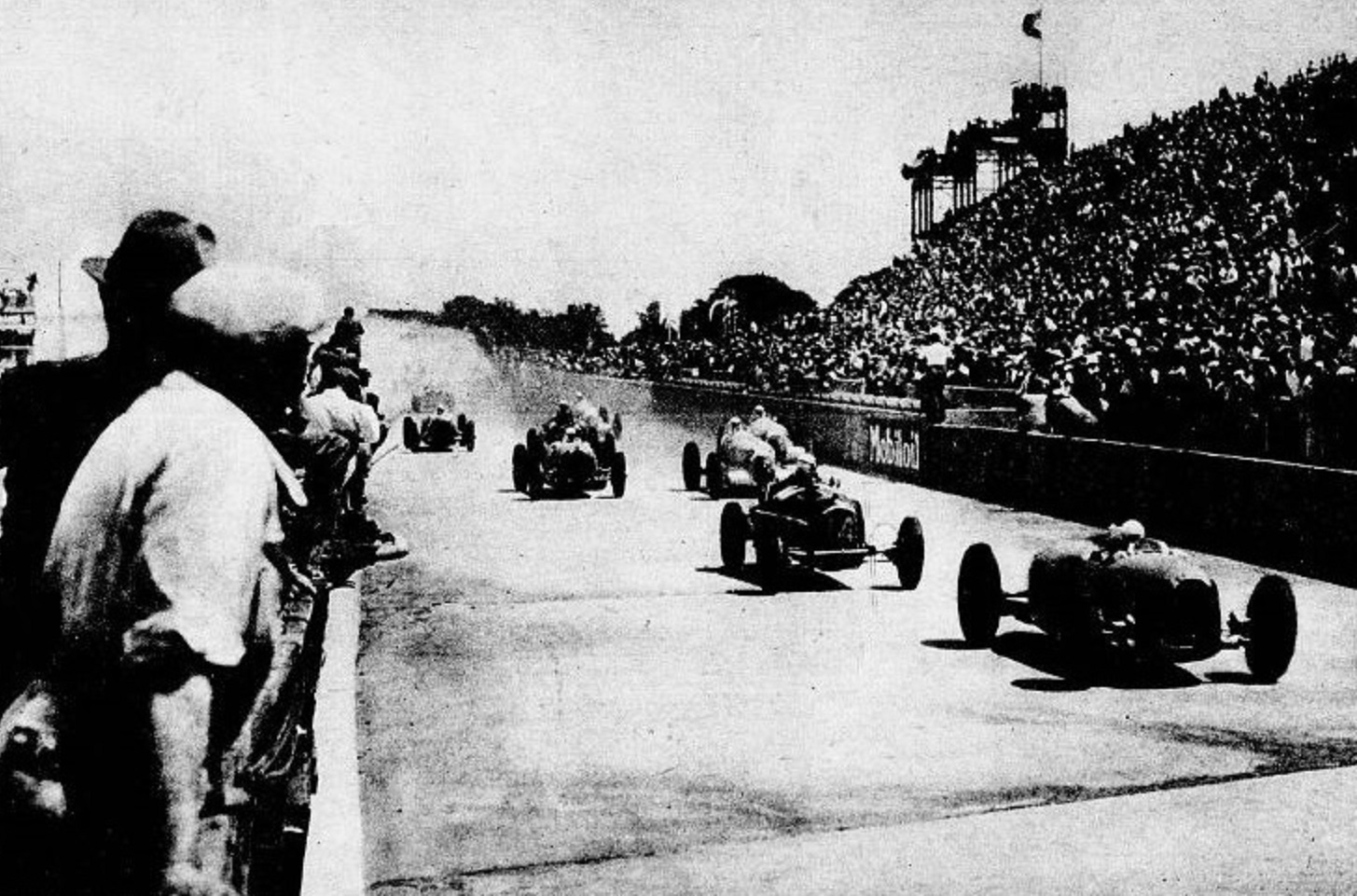 Match hebdo (L'Intran) ,Picryl
Match hebdo (L'Intran) ,Picryl
44. She Regretted Going To The Movies
In the three years immediately after WWII, Cowell had tried to distract herself with exciting new business ventures, designing fast new cars, and, of course, racing them. But that all changed when she went to see a movie one day. She had no idea that the hero of the movie was a fighter pilot who flew a Spitfire—the same aircraft she had flown when she was shot down. Her reaction was devastating.
45. She Had A Breakdown In A Movie Theatre
Something broke in Cowell when she saw the hero of the movie get shot down. She had major flashbacks to her own plane getting shot down and emotionally relived the whole thing. It took her an hour to pull herself together and be able to leave the theater. This was Cowell’s sign that she had to get help. But the outcome of Cowell’s therapy sessions was anything but typical.
46. She Finally Realized She Was Predominantly Female
Cowell had pretty bad depression when she went to see a psychoanalyst. Much to her surprise, she realized that, in her words, “the feminine side of my nature, which all my life I had known of and severely repressed, was very much more fundamental and deep-rooted than I had supposed”. She began taking estrogen. But she wanted to go even further.
47. The Surgery She Had Was Against The Law
Cowell wanted to be a woman in body and soul. She sought out a surgeon who would agree to help transform her body into the one she desired—even though such surgery was against the law in England at the time.
It was a completely new type of procedure, and not without risks. And she had to do it in complete secrecy.
 Channel Four Television, Secret History - The Spitfire Ace (2015)
Channel Four Television, Secret History - The Spitfire Ace (2015)
48. She Had To Give Up Her Hobbies
Luckily, her surgery was successful with no complications, and Cowell went about her life as a woman. But she had to give up her first love: no more Grand Prix motor racing. No matter, because she would soon be playing a new role, as a sort of transgender celebrity. You see, a local magazine had caught wind of her transformation.
 Channel Four Television,Secret History - The Spitfire Ace (2015)
Channel Four Television,Secret History - The Spitfire Ace (2015)
49. She Wasn’t Alone
Cowell wasn’t the only transgender woman causing a sensation at the time: in the United States, the press published lots of stories of trans women, including Christine Jorgensen, one of the first widely known American trans women. So when the UK magazine Picture Post approached her with a request to publish her story, she knew she had bargaining power.
50. She Sold Her Story For Hundreds Of Thousands
The Picture Post magazine paid Cowell a large fee for the juicy details of her life story: the modern equivalent of about $275,000. She went on to publish her biography, which earned her a further $53,000 in today’s dollars. Unfortunately, she kept up some expensive hobbies, and it all came to a head the year she turned 40.
51. She Lost All Her Money
Cowell was only 40 years old when she she had to declare bankruptcy. Her debts totalled $375,000 (adjusted for inflation). The cause? Planes, of course. She had continued to chase her glory days as an RAF fighter pilot and even purchased a decommissioned RAF plane that she planned to fly over the South Atlantic Ocean. But it soon became clear that this plane was not fit for flight.
52. She Had To Sell Her Plane For Scrap
In fact, her ex-RAF plane, constructed mostly of wood, was fit for only one thing: the scrap yard. Two years after she bought it, it had to be completely scrapped. This marked a period of financial difficulty which endured for the rest of her life. By the 1990s, Cowell was no longer in the public eye and lived in a retirement home. She lived to be 93 years old, passing away in 2011. Not that anyone knew until years later.
 Channel Four Television,Secret History - The Spitfire Ace (2015)
Channel Four Television,Secret History - The Spitfire Ace (2015)
53. She Requested A Small Funeral
Roberta Cowell requested that her funeral not be publicized. There were only six attendees, and no flowers. But just before the funeral, while her friends were cleaning out her apartment, they found a big enamel sign. It had the words “Roberta Cowell Racing” printed in bright red letters. They put it above her coffin.
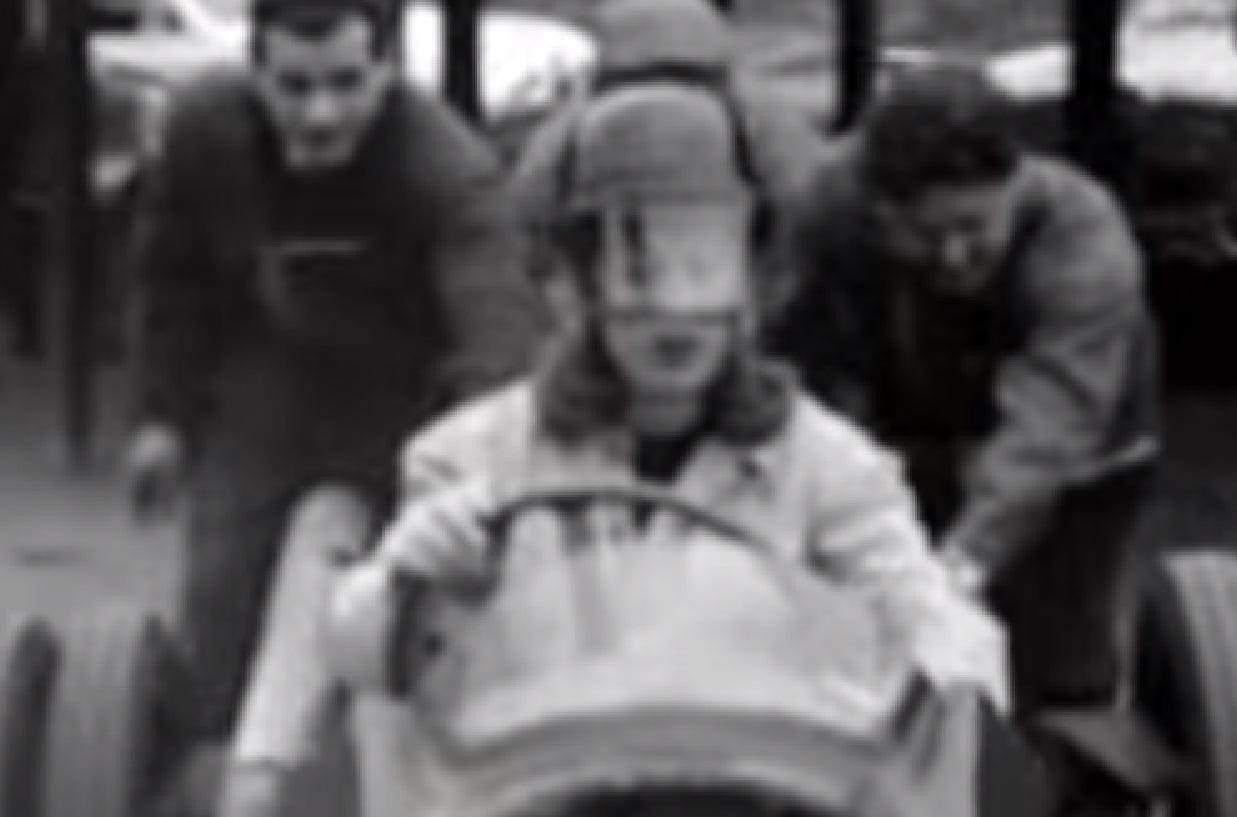 Channel Four Television,Secret History - The Spitfire Ace (2015)
Channel Four Television,Secret History - The Spitfire Ace (2015)

